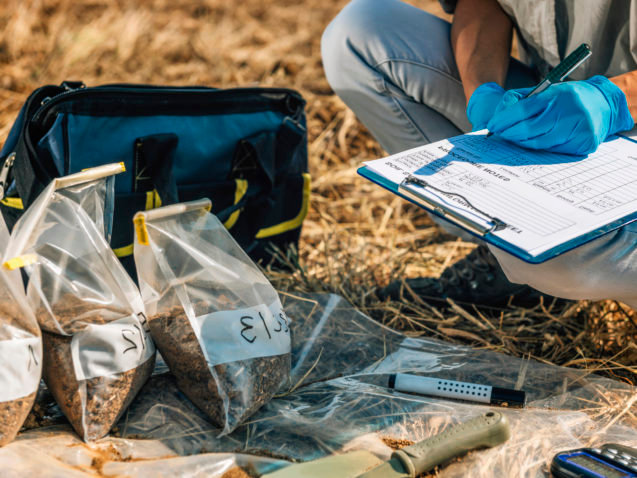As part of our #FoodFuture project, we spoke to Joost Blankestijn, Programme Manager for the Food Innovations for Responsible Choices programme at Wageningen Food & Biobased Research (part of Wageningen University & Research), to find out more about reformulation and what innovations can help food manufacturers provide more nutritious offerings to consumers.
What is Wageningen University & Research doing in the area of food and drink reformulation?
The mission of Wageningen University & Research (WUR) is “to explore the potential of nature to improve the quality of life.” Over 6,800 employees and 12,900 students from more than hundred countries work everywhere around the world in the domain of healthy food and living environment for governments and the business community-at-large.
One of the applied research institutes of WUR is Wageningen Food & Biobased Research. Here we are working closely with food industry experts to provide solutions to their challenges. One of the main challenges we’ve been working on with the industry over the past years has been that of reformulation towards a healthier product composition.
The challenge is changing a recipe by replacing one or more ingredients with more nutritious alternatives.
Reformulation has been a priority area for the food industry for many years now, especially where it pertains to reducing the intake of salt, sugar, and fat. But this is a process for which success rests on many factors.
As part of our Food Innovations for Responsible Choices research programme, we set out to provide greater understanding of these factors and develop innovative solutions to the challenge of reformulation.
We’ve been conducting research into the myriad of possible ingredient alternatives and their applications in recipes across a wide range of food and drink product categories. In particular, we are looking at which alternatives can be used and how these would affect the product quality being reformulated, with a view to helping food manufacturers overcome the challenges to reformulating their products.
The first challenge any producer looking to reformulate their product will encounter is finding an alternative that can adequately replicate the way in which the original ingredient functioned in that recipe. Sugar in baked goods for example, doesn’t just provide a sweet taste but it also acts as an ingredient binder and a provider of bulk to the product.
If you want to reformulate a low-sugar recipe, you will need to not only find an alternative that can adequately replicates the sweetness and taste but also one that doesn’t affect the texture of the product.
Replacing an ingredient then, sometimes means you need to also change the amount of other ingredients in the recipe whilst other times it may be a simple 1:1 replacement.
By carefully examining the functionality of ingredients across a range of recipes and product categories, we can better understand which alternatives are best-suited for which recipes.
What are the technical challenges of reformulation?
The most decisive challenge for reformulation is price.
When reformulating a product, not only do you need to consider whether the function of the alternative ingredient can replicate that of the original, but you also need to consider the difference in price between the two.
Salt and sugar for example are relatively low-cost ingredients and if you want to replace them with yeast extract or sweeteners, the cost of making those recipes will then increase and manufacturers may feel that they have to pass that cost onto the consumer.
This bring us then to a third challenge of reformulation, and that is consumer demand. Once you have reformulated a product, you need to be able to return it to the market and retain the favour of consumers. In sum, you need to get them to still want to buy your product. Should the reformulation process have also raised the price of the recipe then, it may be difficult for some consumers to buy the newly reformulated product at a higher price.
In the end, the success of reformulation efforts hinges on the consumer. Ultimately, consumers will have to accept a change and adapt their diet in order to have a healthier life.
Here at the Food Innovations for Responsible Choices research programme, we are conducting research into consumer behaviour to get a better understanding of how to successfully deliver more nutritious offerings. This means not just developing the best and most nutritious product but to then enable the change that consumers need to make to then embrace those products.
One method we have seen success with is reformulating step-by-step. That is to say, rather than changing a recipe radically in one go, it is better to do so gradually and to give consumers the time to adjust.
This is particularly true with ingredients like salt and sugar for which reducing levels gradually, helps manage the preferences and palate of consumers.
Can you give an example of your work?
One specific solution for reformulation that we have developed here at the Food Innovations for Responsible Choices research programme is the Digital Sugar Reduction tool.
Building on decades of research here in Wageningen, the tool can now predict which replacement alternatives could work best in a given recipe, using multiple datapoints about the ingredients’ chemical-physical characteristics.
The tool is currently used to propose low-sugar solutions for the bakery sector, which faces the unique challenge of finding alternatives to sugar, an ingredient that plays a vital multi-functional role in these recipes and which is relatively low-priced.
How can food and drink manufacturers use your digital sugar reduction tool?
Bakery companies come to us with their reformulation goals, including variables for things like allergens or labelling issues and the digital tool will then direct them to the best available alternative ingredients.
The digital tool can also support manufacturers in how alternatives might impact nutrition labelling, especially with more and more front-of-pack nutrition labelling schemes being rolled out across Europe. The tool for example can calculate the recipe’s potential Nutriscore, based on the original French algorithm for the scheme. The tool can also easily incorporate different nutritional calculations for other schemes.
With two Dutch bakeries, we tested the tool and validated its performance. The bakers found that the tool helped them speed up their reformulation process, cutting out a lot of product trials in the search for the best alternative. This allows the manufacturer to get a viable reformulated commercial product on the market sooner.
At the Food Innovations for Responsible Choices research programme, we are very keen to work with manufacturers to support them in their reformulation efforts.
We have a fantastic tool that can help accelerate the reformulation process and with applications for all sugar users for bakery products. Any interested manufacturers can get in touch with me directly.
Joost can be contacted at joost.blankestijn@wur.nl or via his LinkedIn.
Learn more about the digital tool here.
What could a policymaker propose to support reformulation efforts across Europe?
Policy is an important driver for reformulation. In the Netherlands for example, the Ministry of Health, Welfare and Sport has been working with industry over the past years to encourage product reformulation especially for products that are high in fat, salt, or sugars.
Whilst the efforts have faced difficulties, the Ministry is doubling down its efforts to get the industry to reformulate key product categories.
Ultimately, you need to invest in supporting the consumers to adapt their diet to consist of products low in fat, salt, and sugars and to contain more fruit, vegetables, and fibre, with the inclusion of more plant-based products.
We want the healthier, sustainable choice, to be the easiest choice.





